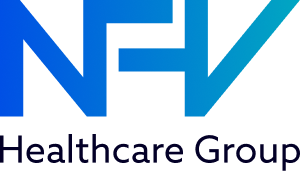
U.S. health care spending grew 4.1% to reach $4.5 trillion in 2022, faster than the increase of 3.2% in 2021, but much slower than the rate of 10.6% in 2020. The growth in 2022 reflected strong growth in Medicaid and private health insurance spending that was somewhat offset by continued declines in supplemental funding by the federal government associated with the COVID-19 pandemic.
In 2022, the insured share of the population reached 92% (a historic high). Private health insurance enrollment increased by 2.9 million individuals and Medicaid enrollment increased by 6.1 million individuals. In 2022, 26.6 million individuals were uninsured, down from 28.5 million in 2021 (a difference of 1.9 million individuals).
Gross domestic product (GDP) continued to increase at strong rates of growth in both 2021 and 2022, increasing 10.7% and 9.1%, respectively. With a lower rate of health care spending growth of 4.1% in 2022, the share of GDP devoted to health care fell to 17.3% in 2022, lower than both the 18.2% share in 2021 and the highest share in the history of the National Health Expenditure Accounts of 19.5% in 2020. During 2016-19 the average share was 17.5%.
Federal COVID-19 supplemental funding to the health sector through the Provider Relief Fund and the Paycheck Protection Program was highest during the initial year of the pandemic and continued to affect health care expenditures in 2021 and 2022, although at reduced levels. Funding to the health sector through these programs was $174.6 billion in 2020, but just $2.0 billion in 2022.
Health Spending by Type of Service or Product:
- Hospital Care (30% share): Spending for hospital care services increased 2.2% in 2022 to reach $1.4 trillion; however, this was a slower growth rate compared to 4.5% that was experienced in 2021. The slower growth in 2022 reflected a slowdown in spending for hospital care by private health insurance, Medicare, and Medicaid and by a decline in other private revenues. Slower growth in hospital prices and a decline in hospital days and discharges contributed to the lower growth in 2022.
- Physician and Clinical Services (20% share): Spending on physician and clinical services increased 2.7% to $8,84.9 billion in 2022, slower than the increase of 5.3% in 2021. Spending growth for physician and clinical services slowed in 2022 for the major payers — Medicare, Medicaid, private health insurance, and out-of-pocket. Slower growth in the use of services and in physician prices contributed to the slower growth in 2022.
- Retail Prescription Drugs (9% share): Retail prescription drug spending increased 8.4% to $405.9 billion in 2022, a faster rate than in 2021 when spending increased by 6.8%. Medicare and out-of-pocket spending growth for retail prescription drugs accelerated, while Medicaid and private health insurance spending growth slowed. The faster growth in 2022 was influenced by faster growth in the number of prescriptions dispensed and an increase in retail prescription drug prices (1.2% in 2022) after four consecutive years of decline.
- Other Health, Residential, and Personal Care Services (6% share): This category includes expenditures for medical services that are generally delivered by providers in non-traditional settings, such as schools, community centers, and the workplace, as well as by ambulance providers and residential mental health and substance abuse facilities. Spending for other health, residential, and personal care services grew 9.7% in 2022 to $246.5 billion, accelerating from 6.7% growth in 2021. The faster growth in 2022 was driven primarily by an acceleration in spending for Medicaid home and community-based waivers.
- Nursing Care Facilities and Continuing Care Retirement Communities (4% share): Spending for services provided at freestanding nursing care facilities and continuing care retirement communities rose in 2022 by 5.6% to $191.3 billion, compared to a decline of 7.8% in 2021. Medicaid, out-of-pocket, and Medicare account for over three quarters of total payments to these facilities and, in 2022, spending for these payers had strong growth following low growth or reduced spending in 2021.
- Dental Services (4% share): Spending for dental services increased just 0.3% in 2022 to $165.3 billion following much faster growth of 18.2% in 2021. The slowdown was driven by slower growth for all the major payers, but particularly for out-of-pocket and private health insurance, as well as a decline in federal funding from Paycheck Protection Program loans and the Provider Relief Fund.
- Home Health Care (3% share): Spending for services provided by freestanding home health care agencies increased 6.0% in 2022 to $132.9 billion, accelerating from growth of 0.3% in 2021. Private health insurance, out-of-pocket, and Medicaid home health spending contributed to the faster growth, while Medicare spending growth for home health care services slowed.
- Other Professional Services (3% share): Spending for other professional services includes establishments of independent health practitioners (except physicians and dentists) that primarily provide services, such as physical therapy, optometry, podiatry, or chiropractic medicine. Spending for other professional services reached $140.6 billion in 2022 and increased 5.1%, a slower rate of growth compared to 13.2% in 2021. The slowdown was driven by slower growth in Medicare, private health insurance, and out-of-pocket spending, coupled with reduced supplemental COVID-relief funding.
- Other Non-durable Medical Products (3% share): Retail spending for other non-durable medical products, such as over-the-counter medicines, medical instruments, and surgical dressings, increased 8.5% to $115.4 billion in 2022, slower than in 2021 when spending increased 12.3%. Out-of-pocket spending accounted for 98% of total spending for other non-durable medical products in 2022.
- Durable Medical Equipment (2% share): Retail spending for durable medical equipment, which includes items such as contact lenses, eyeglasses, and hearing aids, increased 5.1% in 2022 to $67.1 billion, following much faster growth of 18.6% in 2021. The slowdown in 2022 was driven by slower growth in out-of-pocket and private health insurance spending.
Health Spending by Major Sources of Funds:
- Private Health Insurance (29% share): Private health insurance spending increased by 5.9% in 2022 (to $1.3 trillion), which was slightly slower than the increase of 6.3% in 2021. For hospital care, physician and clinical services, and dental services, private health insurance expenditures grew more slowly in 2022, following stronger growth in 2021. Private health insurance enrollment increased 1.5%, or 2.9 million individuals, in 2022 — the fastest increase since 2015.
- Medicare (21% share): Medicare spending increased 5.9% to reach $944.3 billion in 2022, a slower increase than in 2022 when Medicare spending increased 7.2%. Medicare fee-for-service expenditures declined by 1.9% in 2022, while Medicare private health plan spending (accounting for 50% of total Medicare spending) increased 15.1%. Total Medicare enrollment increased 1.9% in 2022 compared to growth of 1.7% in 2021 (or by 1.2 million individuals), with enrollment in Medicare private plans increasing 8.5% and fee-for-service enrollment declining 3.0%.
- Medicaid (18% share): Medicaid spending increased 9.6% to $805.7 billion in 2022, the third consecutive year of growth above 9%. Medicaid enrollment grew 7.2% in 2022 after increasing 11.1% in 2021 and 4.6% in 2020. This amounts to about 18 million individuals gaining Medicaid coverage between 2019 and 2022. Faster Medicaid enrollment growth since 2019 reflects the newly enrolled as well as the continuous enrollment requirement of the Families First Coronavirus Response Act that took effect on March 18, 2020 and ended on March 31, 2023. Federal Medicaid spending increased 10.8% and state Medicaid spending increased 6.6% in 2022, with the federal government’s share of total Medicaid spending reaching 71% in 2022.
- Out-of-Pocket (11% share): Total out-of-pocket spending increased by 6.6% in 2022 to $471.4 billion, slowing from growth of 11.0% in 2021. Dental services, durable medical equipment, and physician and clinical services, which collectively accounted for 34% of all out-of-pocket spending in 2022, were the main contributors to the slower growth in 2022.
Health Spending by Type of Sponsor[i]:
- In 2022, the federal government and households accounted for the largest shares of national health spending (33% and 28%, respectively), followed by private businesses (18%), state and local governments (15%), and other private revenues (6%).
- Federal government spending for health care increased 1.0% in 2022 following a 3.4% decline in 2021. The federal portion of Medicaid payments increased 10.8% in 2022 compared to 11.6% in 2021. The continued strong growth in federal Medicaid expenditures can be attributed to rapid enrollment growth and to the Families First Coronavirus Response Act’s temporary 6.2 percentage-point increase in the federal medical assistance percentage. Conversely, spending for other federal health insurance programs continued to decline in 2022 due to reduced COVID-19 federal funding.
- Health care spending by households grew 6.9% in 2022, similar to the rate of 6.8% in 2021. Faster growth in premiums and payroll taxes that were paid for Medicare, as well as faster growth in household contributions to employer-sponsored private health insurance premiums, offset slower growth in out-of-pocket spending on health care.
- State and local government health care expenditures increased 6.5% in 2022, following a similar growth rate of 6.2% in 2021. Faster growth in state Medicaid spending (a 35% share of state and local spending) more than offset slower growth in state and local government contributions to employer-sponsored private health insurance premiums (29% share of state and local spending).
- Spending on health care by private businesses increased 6.0% in 2022, a slower rate than the increase of 7.6% in 2021. The largest share of private businesses’ health spending was contributions to employer-sponsored private health insurance premiums (a 75% share), which increased at a slower rate in 2022 (5.9 %) compared to growth of 7.2% in 2021.

